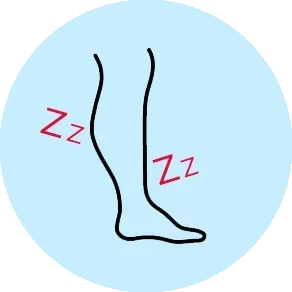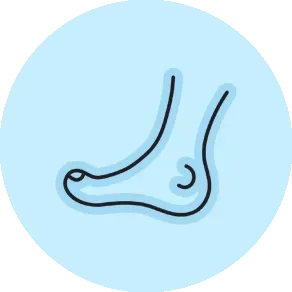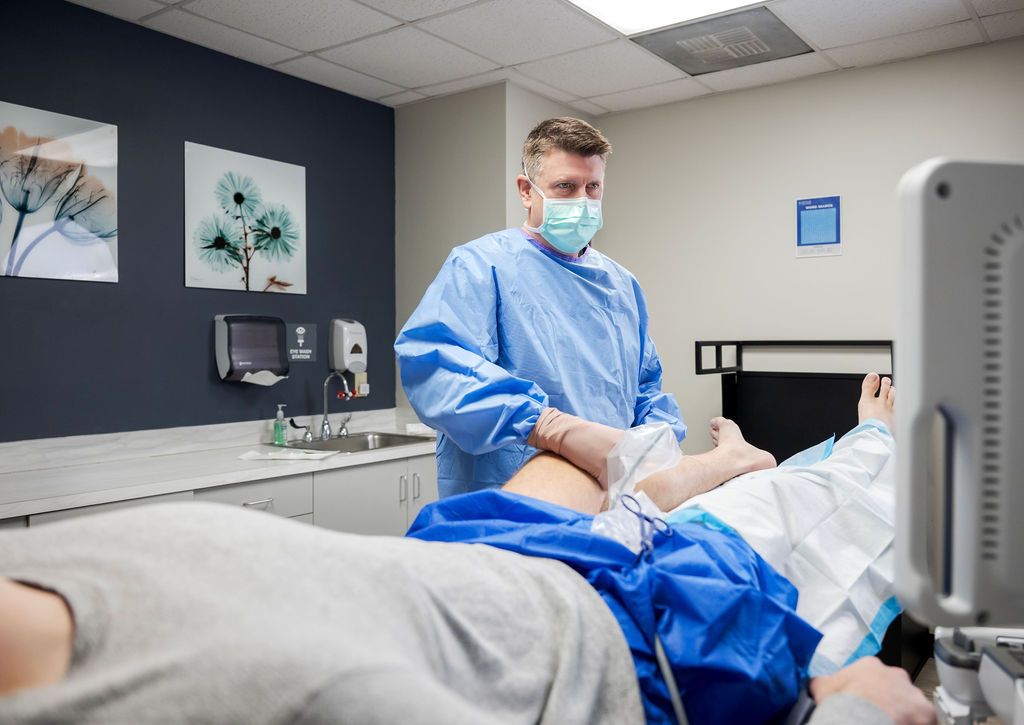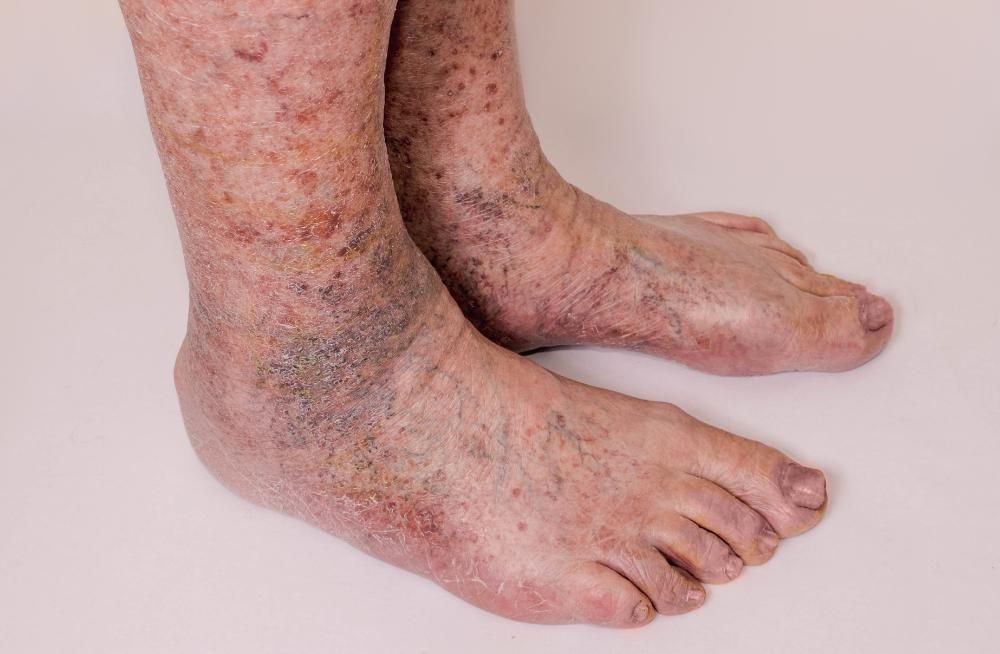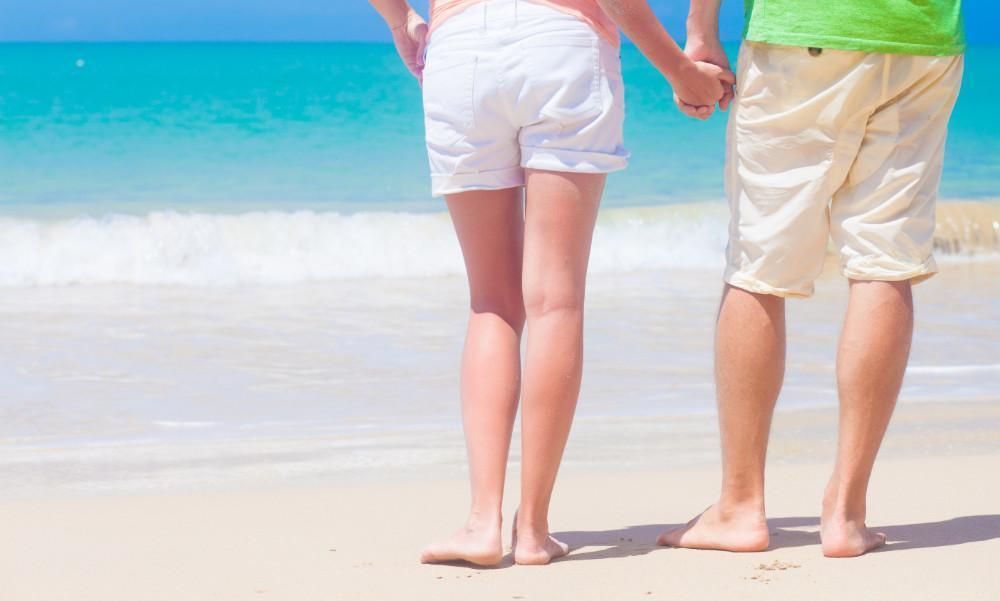Bleeding Varicose Veins – Attention Leg Shavers and Shower Lovers - Avoid a Bloody Mess
Bleeding varicose veins are a potentially serious problem. Most people know what varicose veins are, but few are aware that veins can rupture and bleed.
Varicose veins are enlarged veins located close to the skin surface. Varicose veins often referred to as “varicosities”, can often be seen bulging through the skin. In some people, varicose veins can lurk underneath the skin. The medical definition of a varicose vein is an abnormally dilated vein measuring greater than 3mm in diameter.
Spider veins are basically “mini” versions of varicose veins. Spider veins are much smaller (less than 1mm in diameter) and don’t bulge to the same extent as varicose veins.
Some people have visible veins in their legs that are too large to be considered spider veins but aren’t large enough to be considered true varicose veins. These “tweener” veins are called reticular veins.
VARICOSE VEIN SOLUTIONS
Living with varicose veins can be more than just a cosmetic concern – they can cause discomfort, affect your daily activities, and impact your confidence. As The Leg Vein Experts, we understand that each case is unique and requires personalized care.
EXPERT CARE YOU CAN TRUST
At Vascular Solutions, we combine advanced treatments with genuine care to solve your varicose vein problems. Led by board-certified vascular surgeon Dr. Ford, our team offers state-of-the-art solutions including:
- Radiofrequency Ablation treatment
- VenaSeal® medical adhesive system
- Varithena® foam therapy
Each minimally invasive procedure is precisely selected and customized to deliver the best possible results for your specific condition. Our approach focuses not just on improving the appearance of your legs, but on restoring healthy circulation and providing long-lasting relief.
External Bleeding:
When most people think about bleeding the first thought that comes to mind is bright red blood oozing or spurting from the body. External bleeding tends to get everyone’s attention! External bleeding can occur from both varicose veins and spider veins, but quite often the culprit is a reticular vein.
Attention leg shavers – be careful!
One of the most common scenarios that causes bleeding from a varicose vein is leg shaving. As the sharp razor is run along the skin surface any little lumps or bumps in the skin can be nicked by the sharp edge of the blade.
The skin overlying varicose veins is often stretched, thin, and weak. This makes these areas particularly vulnerable to bleeding when shaving. Interestingly, it’s the medium-sized veins (1-3mm in diameter) that tend to get nicked the most.
Leg shaving injury to skin surface veins is one of the reasons why the bathroom is the most common place where varicose vein bleeding occurs.

VARICOSE VEINS
QUESTIONS & ANSWERS
WHAT CAUSES VARICOSE VEINS?

Your leg veins work continuously to move blood back to your heart, using special one-way valves to prevent backward flow. When these valves become weak or damaged, blood can flow backwards and pool in the veins, causing increased pressure. This pressure, combined with factors like aging or genetics, can cause veins near the surface to become enlarged and twisted, taking on the characteristic dark purple or blue appearance of varicose veins.
WHAT SYMPTOMS DEVELOP DUE TO VARICOSE VEINS?
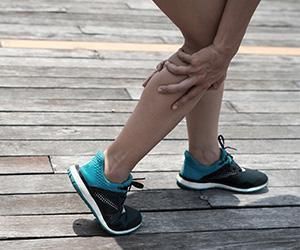
While some people may not experience discomfort, varicose veins often cause:
- Aching or throbbing legs
- Evening fatigue
- Nighttime leg cramping
- Restless legs
- Persistent itching
- Burning sensations
- Lower leg swelling
- Skin changes around the ankles
Expert Insight: Without proper treatment, varicose veins can progress to more serious conditions. Changes in skin color or texture around the ankles often signal advancing vein disease that needs medical attention.
WHAT TREATMENT OPTIONS DO I HAVE FOR VARICOSE VEINS?
At Vascular Solutions, we understand that every patient's vein condition is unique. Our treatment approach begins with a thorough evaluation to determine the most effective solution for your specific needs. While some patients may benefit from conservative measures like leg elevation and compression therapy, many require more advanced interventions for lasting relief.
STATE-OF-THE-ART SOLUTIONS
Our comprehensive treatment options include:
- VenaSeal® - Advanced Adhesive Treatment: A revolutionary approach using medical-grade adhesive to instantly seal affected veins. This painless procedure requires minimal recovery time, allowing you to return to your daily activities immediately.
- Radiofrequency Ablation - Precision Heat Therapy (Venclose, ClosureFast): This minimally invasive procedure uses controlled radiofrequency energy to seal problematic veins. Blood naturally redirects to healthy veins, reducing pressure and improving circulation. Most patients experience significant symptom relief within weeks.
- Varithena® - Specialized Foam Treatment: This versatile solution uses an advanced microfoam to treat veins of various sizes and locations. The foam adapts to your vein structure, effectively treating even complex vein patterns and providing comprehensive results.
- Phlebectomy - Precise Vein Removal: Using tiny, cosmetically-placed openings, this technique allows for direct removal of visible varicose veins through a minimally invasive approach.
- Sclerotherapy Medical - Precision Vein Treatment: This proven treatment uses specialized medications precisely injected to target and close unwanted veins. The carefully selected solution works with your body's natural processes to effectively treat spider veins and small varicose veins, gradually fading them from view while improving overall vein health.
CONSERVATIVE MEASURES (where appropriate):
- Leg Elevation
- Medical Grade Compression Hose
- Velcro Compression Wrap
- Non-Pneumatic Compression Device
- Vein Formula (Supplement)
WHAT DOES A TREATMENT PLAN LOOK LIKE?
CUSTOMIZED CARE APPROACH
Your treatment plan may combine multiple approaches for optimal results. Our board-certified specialists carefully select the most appropriate treatments based on:
- Your specific vein patterns
- Severity of symptoms
- Lifestyle needs
- Overall health goals
Expert Insight: Many patients benefit from a combination of treatments that both reduce pressure in the deeper veins and address visible surface veins. This comprehensive approach helps ensure long-lasting results.

TAKE THE FIRST STEP
Schedule your consultation today to discover which treatment options are right for you. At Vascular Solutions, we combine advanced technology with expertise to help you achieve healthier, more comfortable legs.
Why does bleeding occur?
There are several reasons why varicose veins can bleed. One of the common causes of bleeding from varicose veins is localized trauma or skin injury. Direct trauma to a vein can result in bleeding. It’s surprisingly easy to injure skin surface veins. Some scenarios that result in vein injury and external bleeding are:
Bumping leg against the dishwasher
Accidental scratching of a vein (eg. with toenail of other foot)
Furniture (or other objects) fall against the leg
Dog/animal scratch
Trip & fall injuries, resulting in skin graze
Another situation that can result in bleeding from varicose veins is weakening & deterioration of skin quality overlying the vein. The skin overlying a vein can become extremely thin and weakened. When this occurs the risk of spontaneous vein rupture and external bleeding increases.
Excessive pressure inside the veins is another risk factor for bleeding. Increased vein pressure is commonly related to underlying vein problems that occur in the upstream veins. The most common underlying condition is venous reflux, which is also known as venous insufficiency. In this condition, the valves in the saphenous vein have ceased working properly, which can lead to increased back-pressure within the leg veins.
Other factors that can increase pressure in leg veins include obesity and being sedentary.
Intradermal bleeding:
Another form of bleeding that can occur (especially with spider veins) is intradermal bleeding. In this situation rupture of a spider vein occurs underneath (or within) the skin surface, creating a blue-purple bruise that is visible through the skin. “Bleeding” in this situation is normally mild and self-limited but can be a sign that it’s time to get your veins checked out.
Are hot showers dangerous?
When your body is in a hot environment the blood vessels at the skin surface typically dilate. This natural response to increased temperature represents your body’s effort to promote heat loss.
“Spontaneous” bleeding from varicose veins often occurs when people are taking a hot shower. The combination of prolonged standing and high temperature causes the leg veins to dilate, which increases the risk of spontaneous bleeding.
If you've had issues with bleeding from varicose veins while showering you may want to decrease your shower temperature until you get your veins evaluated by a vein specialist.
What to do if bleeding occurs:
If you experience bleeding from a varicose vein you should immediately apply pressure to control the bleeding and seek help. Most of the time bleeding from a varicose vein will stop after direct pressure has been applied for a few minutes. Sometimes a longer duration of direct pressure will be required. You can use your thumb or fingers to apply direct pressure over the bleeding vein. The other thing you should do is try to elevate the leg above the level of the heart. This will reduce the effect of gravity within the veins.
If you are taking a hot shower when the bleeding occurs you should stop showering and allow your body temperature to return to normal neutral temperature.
Sometimes a compression bandage will help, but compression bandages are not always readily accessible and can be tricky to apply. If a compression bandage is applied it should be wrapped around the foot ankle and lower leg, not just the site of bleeding.
If bleeding is significant or unable to be controlled call 911 and report your medical emergency.
How do doctors treat bleeding varicose veins, reticular veins, or spider veins?
One of the first steps in the evaluation includes taking your vital signs (including blood pressure and pulse) and gauging the degree of blood loss. Sometimes people can lose significant amounts of blood from a bleeding vein and may need to be “resuscitated” with intravenous fluids or blood products. Fortunately, this is relatively rare. Most often attention can be directed at the bleeding varicose vein.
In addition to direct digital pressure, leg elevation, and compression bandages, medical professionals have various additional options to control bleeding from a ruptured varicose vein. These options include suturing (stitching) the vein, applying a medical adhesive polymer/glue, or applying patches that promote clotting.
After the acute bleeding event is controlled, you’ll likely be directed to a vein specialist for further evaluation. Vein specialists are doctors who have dedicated their careers to caring for patients with vein problems. Vascular surgeons are uniquely trained to specialize in vascular conditions and can treat the full spectrum of vascular disorders.
Most of the time someone who has experienced bleeding from a varicose vein will require an ultrasound test to identify whether there is an underlying vein condition. If you have an underlying vein condition you may be a candidate for some office-based procedures to reduce the likelihood of recurrent bleeding.
What types of procedures reduce the risk of varicose vein bleeding?
The most common underlying condition that increases the risk of varicose vein bleeding is venous reflux, also known as venous insufficiency. In this condition, the valves in the upstream leg veins have become dysfunctional. When this occurs back-pressure can increase in the leg veins, which can cause varicose veins, spider veins, and reticular veins to pop out on the skin surface.
Various procedures are available to treat venous reflux. By getting to the root of the problem it’s possible to reduce the likelihood of recurrent bleeding. Common procedures used to treat venous reflux include Closurefast (AKA: radiofrequency ablation), VenaSeal (medical adhesive vein closure), and Varithena (microfoam treatment). Each of these procedures works in different ways, but they all seal off bad veins in the legs, which redirects blood to the good veins in the legs.
In addition to treating underlying reflux, most people with bleeding varicose veins will also benefit from procedures used to directly seal or eliminate the varicosities. If the varicose veins are small a common technique is to treat these veins with sclerotherapy. Sclerotherapy involves injecting the varicose vein with a liquid medication that causes the vein to shrivel and fade. If the varicose veins are large and bulging a procedure called phlebectomy may be more appropriate.
Vascular Solutions prides itself on being the best vein clinic in Charlotte.
If you have varicose veins, spider veins, or are concerned about the risk of varicose vein bleeding we can help. Contact us today to set up your new patient appointment.




